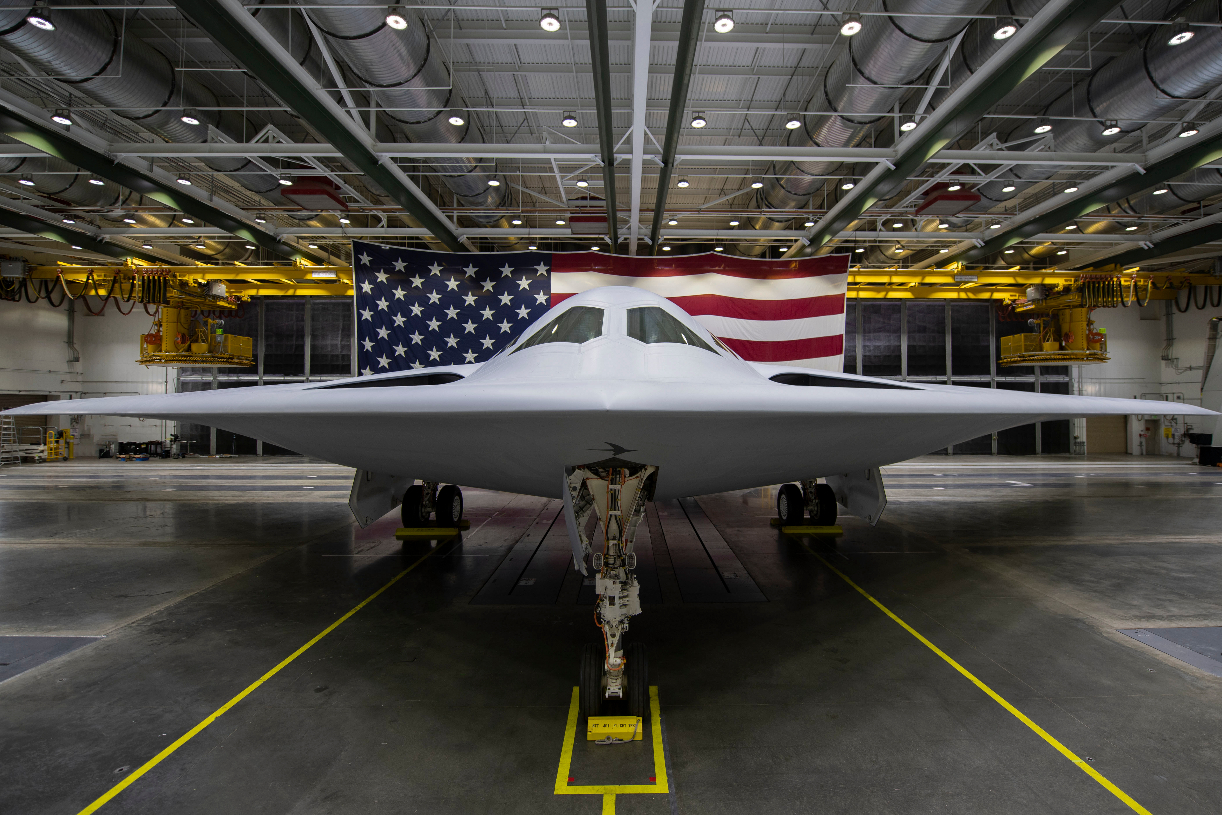What You Need to Know: The U.S. Air Force’s plan to retire B-1B Lancer bombers by the late 2020s could leave a critical gap in America’s long-range strike capability, especially given the delay in the B-21 Raider’s deployment.

-The B-1B has a strong combat record, providing crucial air support in conflicts from Serbia to Iraq, and remains essential in the face of potential conflicts with China.
-Rather than retiring the Lancers, the Air Force should refurbish and redeploy them until B-21s are fully operational, ensuring sustained U.S. air dominance and readiness for future conflicts.
The B-1B Lancer’s Combat Record Proves It’s Not Ready for Retirement
The B-1B Lancer, nicknamed “The Bone,” is more than 30 years old. In 2021, 17 of these birds were retired. That leaves 45 units in operation until the Air Force’s new stealth bomber, the B-21 Raider is ready for mass production and deployment. The only problem is that the B-21 will not be ready anytime soon to replace the Lancer. And that could take a really long time.
Yet, Pentagon assessments say that China will invade Taiwan by 2027 (I suspect Beijing will attempt this sooner).
America Needs to Be Ready for WWIII
So, a critical function that the B-1B Lancer performs, and that the B-21 is supposed to replace, will be operating in a degraded fashion for years to come. Despite this, the Air Force persists in pushing ahead with its plan to retire the Lancer fleet by the end of the 2020s.

To be clear: the B-21 is an essential next step for the Air Force. And if the Air Force were serious about deterring China in any meaningful timeline, then it would divest itself from the wasteful sixth-generation warplane and reallocate those funds into meeting the B-21 order as quickly as possible.
Until the B-21s can come online, though, the B-1s are available and they have a legacy of successful combat missions.
A Brief History of the B-1B Lancer
The Lancer is a long-range, multi-mission, supersonic conventional bomber which has flown missions for the Air Force since 1985. B-1s were originally conceived as a nuclear-capable bomber. By the time the Soviet Union had collapsed and the Cold War was over, the Air Force switched the Lancers to exclusively conventional armaments.
The Lancers acquitted themselves with honor during America’s multiple post-Cold War conflicts. In America’s air war against Serbia to stop their attacks on Kosovo, just six B-1s flew two percent of the combat missions. These handful of B-1s dropped 20 percent of the ordnance, though.
During the Iraq War (2003-11), the B-1B flew just two percent of the bombing missions yet they dropped over 40 percent of the precision weapons.
And of the 17 Lancers that the Air Force retired in 2021, the Air Force told Congress that, “overworked by long years of providing on-call air support to troops in Afghanistan and Iraq.” Americans traditionally dislike old things. But the way the Air Force talked about those 17 B-1s they retired should have made all who heard those remarks question the Air Force’s judgement.
Because, while the Air Force argued that “Many of the aircraft had severe structural fatigue, especially at the wing-pivot points, because the jets were flying high and slow, instead of low and fast with wings swept, as they were designed to do,” the fact is that these birds have an incredible track record in combat.
There’s Nothing Wrong with Old Planes
A relative handful of B-1s have basically ensured US air dominance through the last three wars that America has fought. Yet, these are the bombers that the Air Force is trying to cut—all while there is an insufficient number of replacement B-21s coming online, and at the moment when a third world war seems poised to erupt at any moment.
Not a single Lancer should be retired. The birds that did the heaviest amount of flying in the last few wars America has fought should be refurbished and redeployed to the Indo-Pacific or Middle East until the Air Force has the funds and capacity to fulfill most of its order for the B-21. Retiring any number of the B-1 Bombers before replacements are available is irresponsible and creates a serious vulnerability for the US Air Force that America’s rivals will happily exploit.
For all the complaining about how old the B-1 has gotten, its service record indicates that this is a seriously good plane that would be very hard to replace. Just look at the Russians in Ukraine. They have managed to basically defeat the well-funded and Western-backed Ukrainians by throwing many aging systems from the Soviet era into the fight.
Yes, they’ve lost many systems. But the basic strategic reality is that Russia still holds the territories that it started the war with whereas Ukraine is being depleted.
Old planes and equipment should not be denigrated simply because they are old or have wear-and-tear. Don’t retire the B-1B Lancers.
Author Experience and Expertise: Brandon J. Weichert
Brandon J. Weichert, a National Interest national security analyst, is a former Congressional staffer and geopolitical analyst who is a contributor at The Washington Times, the Asia Times, and The-Pipeline. He is the author of Winning Space: How America Remains a Superpower, Biohacked: China’s Race to Control Life, and The Shadow War: Iran’s Quest for Supremacy. His next book, A Disaster of Our Own Making: How the West Lost Ukraine, is due October 22 from Encounter Books. Weichert can be followed via Twitter @WeTheBrandon.
All images are Creative Commons or Shutterstock.
From the Vault
Russia Freaked Out: Why the U.S. Navy ‘Unretired’ the Iowa-Class Battleships
Battleship vs. Battlecruiser: Iowa-Class vs. Russia’s Kirov-Class (Who Wins?)
